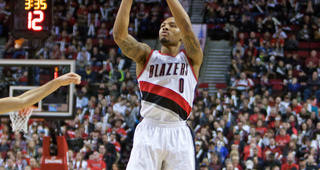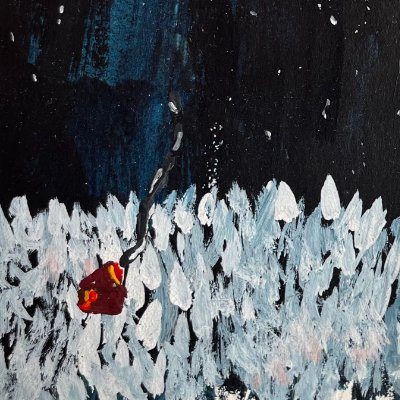The oft-professed reason NBA teams don’t tend to draft four-year college players early in the night is that they’re much closer to finished products than the nineteen- and twenty-year-olds who typically litter the lottery. You’re picking Brandon Ingram at number two because he’s shown flashes of greatness in his one year at Duke, possesses intriguing athleticism, and you think you have coaches and trainers who can get him playing at a much higher level when he’s twenty-two or twenty-three than Malcolm Brogdon is right out of the gate. You’re drafting Ingram on pure talent rather than immediate production.
We’ll know three or four years from now whether Brandon Ingram became an All-NBAer or remained theoretical until he turned out to be just okay, but we will also have a better grasp on Brogdon, even if experience tells us we probably already know most of what he is. It’s true that players grow more between their teens and early twenties than their middle to late twenties, but we too easily gloss over the less dramatic development that happens after most guys’ rookie deals are up. Kevin Durant was the second-best player in the league four years ago, and he still is now, but that doesn’t mean he hasn’t improved. He’s a more willing and capable passer than he was at twenty-five, and he more fully utilizes his quickness and Plastic Man frame on defense in big games. He’s at that perfect point of his playing days where he’s been in the league long enough that he thoroughly understands it, but he hasn’t physically deteriorated yet. He didn’t get here incidentally, but through incremental refinements that occurred after he had already announced himself as a generational player.
The broad narrative of Dame Lillard’s career is that he more or less showed up this good. That’s halfway true: not many rookies arrive as polished as Dame was. He averaged nineteen points and six-and-a-half assists per game in his first NBA season and won Rookie of the Year. Since then, though, he has boosted his scoring numbers each year of his professional career—20.7 PPG, then 21, then 25.1, then 27—and his PER has climbed about two points every season he’s been in the league. Last season, the Blazers struggled early, but that had more to do with Neil Olshey signing some redundant players in the offseason than anything else. (You had better need Evan Turner, or he’s only going to hurt you.) Dame was consistently productive and finished with the best true shooting percentage (58.6) of his career and averaged only 2.6 turnovers per game despite sporting the league’s seventh-highest usage rate.
Dame still has his shortcomings. He works too hard on offense to ever be more than a passable defender, and he can forget about his teammates in crucial moments and force shots through double-teams rather than trusting others to make the game-turning play. Those things are unlikely to change, but each year, he comes back having added some new dimension to his game. Last season, it was the swiftness with which he got shots up around the rim. He taught himself to elude shot-blockers like DeAndre Jordan and Rudy Gobert by reducing the necessary arm motion on his floaters and lay-ins. He fired those things up like he was snapping his fingers. It must have taken a long and tedious offseason regimen to perfect those precise movements. All those stories about how Dame is the first guy to the practice gym and the last one to leave scan like boringly boilerplate mythology, but the sweat equity evidently reaps dividends.
It follows that if Dame, due to his work ethic, hasn’t yet hit his ceiling, then neither have the Blazers. There are other factors, of course—Zach Collins’s future, whether Olshey is going offload Moe Harkless or Al-Farouq Aminu, the possibility that C.J. McCollum has another gear, etc.—but the headline is that Portland will go as far as Dame can take them, in part because he wouldn’t have it any other way. He’s a strong personality with a hero complex and he’s committed to the team long-term. Like John Wall in Washington, Dame has twinned his fate with the franchise’s.
Lillard is twenty-seven, and a few months younger than Draymond Green and Klay Thompson, which gives you an idea of what the Blazers’ and the Oakland native’s championship prospects are going forward. Everybody in the league is competing/not competing with a Warriors juggernaut that’s either going slowly to age out of contention or dissolve suddenly because somebody got bored or wanted a fatter salary. Dame’s a self-help guru with a killer crossover, so he probably thinks the Blazers have an outside shot at his hometown team, but that’s delusion.
But what’s very real is that he’s not going to get discouraged or complacent. There’s still a long while before Dame begins his physical decline, and in that span, he will continue to grow, day over day, year over year, whether it reaps results or not. The thing about Dame that makes him as great as he is now and as great as he’s going to be in three or four years is that he’s not going to let himself down. He’s always worth tracking because he’s never content with where he’s at.
More Futures: Atlanta Hawks, Boston Celtics, Brooklyn Nets, Charlotte Hornets, Chicago Bulls, Cleveland Cavaliers, Dallas Mavericks, Denver Nuggets, Detroit Pistons, Golden State Warriors, Houston Rockets, Indiana Pacers, Los Angeles Clippers, Los Angeles Lakers, Memphis Grizzlies, Miami Heat, Minnesota Timberwolves, New Orleans Pelicans, New York Knicks, Oklahoma City Thunder, Orlando Magic, Philadelphia 76ers, Phoenix Suns, Sacramento Kings, San Antonio Spurs, Toronto Raptors, Utah Jazz, Washington Wizards



